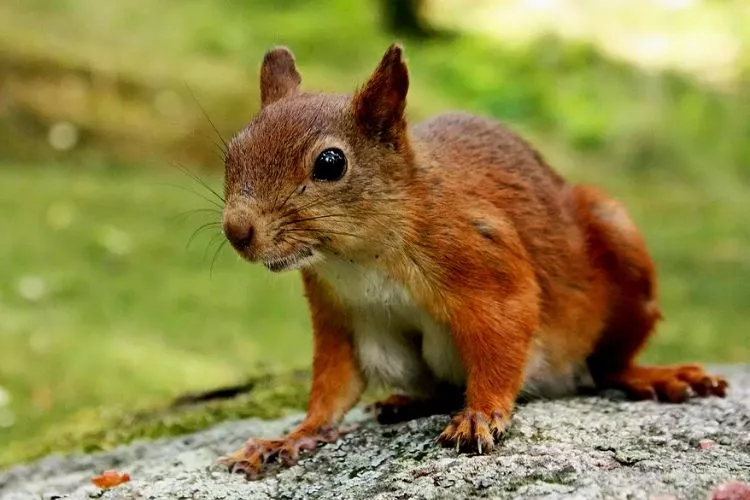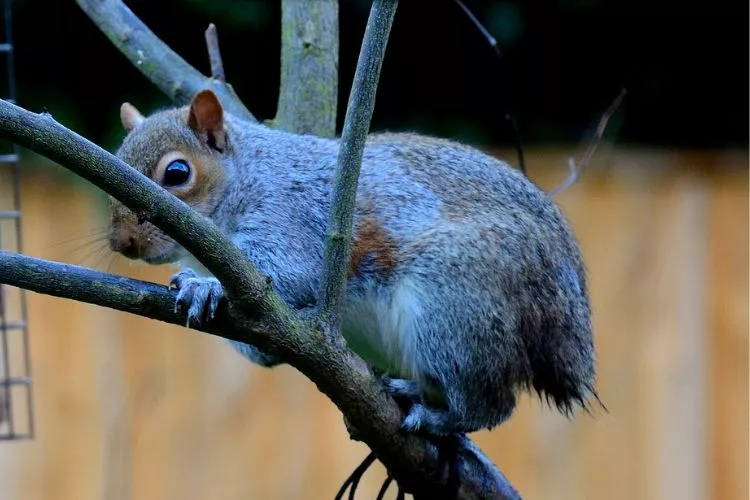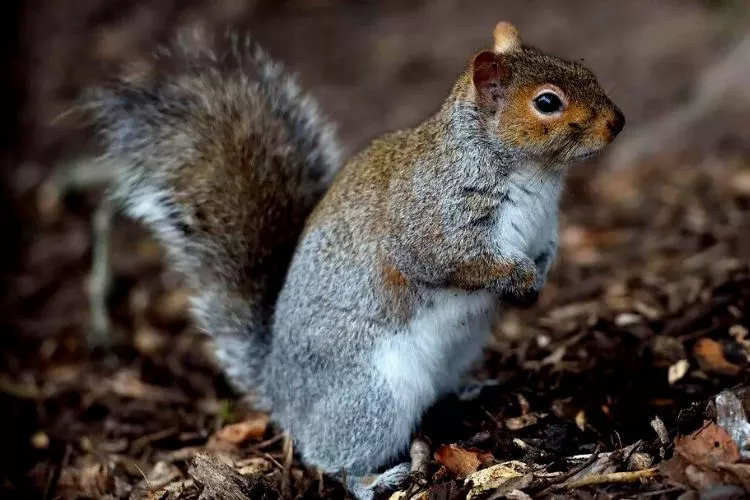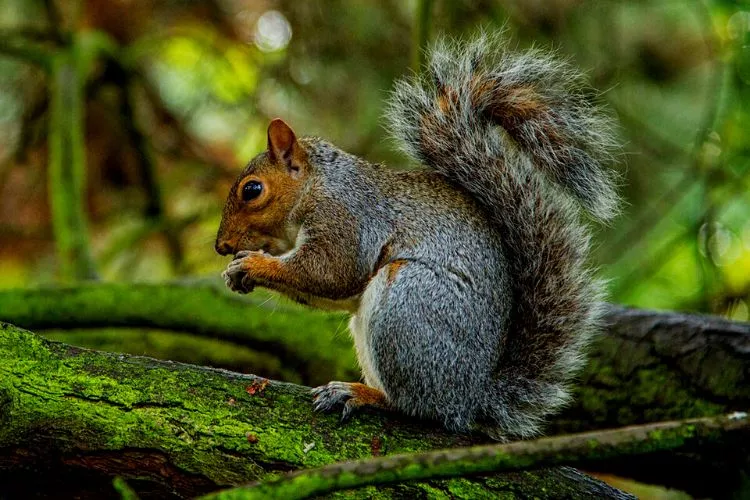Squirrels have amazing adaptations to their tails that help them balance, communicate, and hide from predators like hawks and owls. Yes, squirrel tails grow back, they may also be able to regenerate their tails, which many people don’t realize!
Squirrel tails play a key role in balance and communication. They are known as a dewlap, and they help squirrels maintain their balance while they jump from tree to tree.

Also, their tail plays an important role in mating and communicating with other squirrels. When a male squirrel is ready to mate, he will fan out his fur, which turns into a big fluffy ball of fluff.
A female will choose a male based on how big his dewlap is because that indicates how good he’ll be at defending her young after mating. Read on to learn more about the fascinating regenerative properties of squirrel tails and why they have them in the first place.
Do squirrel tails grow back?
Squirrel tails do grow back. It is a common misconception that the tail will not grow back once it has been broken off or cut off. The truth is that the tail will grow back with time. The process can take anywhere from six months to two years, depending on the severity of the injury.
There are two main reasons why squirrel tails grow back, and both depend on how much damage was done to the squirrel’s tail in the first place. If only a significant portion of the tail is broken off, then it can be difficult for their body to keep producing new hair since there is not enough hair left to regenerate.
In this case, the tail may stop growing after three to four weeks. When this happens, they rely on their fur coat to protect them from predators like coyotes and foxes. The fur is also important in maintaining warmth during winter months.
If the entire tail gets cut off, growth may continue as long as nerves are not severed during amputation. Nerves play an important role in regeneration because they help stimulate tissue growth and lead blood vessels into newly regenerated cells so they can receive proper nourishment and oxygen.
Can a squirrel survive with no tail?
The answer is yes. To better understand how a squirrel can survive with no tail, we must first examine what a squirrel’s tail is used for. For starters, the tail provides balance and stability when a squirrel leaps from tree to tree or navigates around obstacles on the ground.
It also helps them keep their balance as they run up trees and along branches to gather food and build nests in trees.

The tails also help the squirrel regulate its body temperature by acting as an umbrella and shading it from direct sunlight during the day or trapping heat at night when it wraps around its body like a blanket. But wait! There’s more!
A squirrel uses its tail to communicate with other animals. Screeches, whines, and chatters are all possible because of the long hairs that grow out of the end of a squirrel’s tail. They use this fur-covered appendage as a whip (to warn other animals away) and a flag (to show dominance).
What causes squirrels to lose their tail fur?
In nature, squirrels lose their tail fur for several reasons. The most common reason is that the tail has been damaged or injured. Often this happens during winter when the squirrel is foraging for food. The other time it can happen is if a predator grabs onto the tail and pulls hard enough to cause injury.

Regardless of what caused it, when you see a squirrel with no fur on its tail, there’s a good chance that it lost its fur due to injury or frostbite. The regenerative capacity of a squirrel varies by species.
For example, some have cells in the epidermis called stem cells which are responsible for producing new cells like hair follicles which produce hair. Sometimes, the wound might be close to the bone, so new muscle tissue might grow.
Do squirrel tails serve any purpose?
Squirrel tails are a common occurrence in wooded areas across the country. They are most likely to be found where there is a lot of brush, leaves, and forest floor debris. The tails can often be seen if you look closely enough as they stick out from under logs or fallen branches on the ground.
While many people wonder if squirrel tails grow back after being lost, it is important to know that these fluffy appendages serve an important function for the animals.

A squirrel’s tail serves as an important form of communication with other members of their species and can also be used as a means of defense when feeling threatened by predators. When the animal feels threatened and has nowhere else to go, it may use its tail as a distraction by swatting at its would-be attacker.
If the predator becomes too close to the squirrel, it will quickly retreat into a hiding spot while still keeping its tail outside the location so that any nearby passersby can see the tail moving. These movements may indicate whether or not danger lurks inside and will warn away friends or attract enemies.
The rate of motion typically tells how scared or angry an individual might be, which lets others know how dangerous it is. As you can see, this furry accessory comes in handy for more than just providing balance!
Why do some squirrels lose their tails?
One of the most common questions about squirrel tails is done they grow back. The answer to this question is yes, and here’s why.
A squirrel can lose their tail if it gets caught in one of the many predators out there, like a bird or other mammal. This will cut off blood flow and essentially make it fall off on its own accord.

Another way that a squirrel can lose their tail is if they get caught by a predator such as a cat or a dog and are pulled to safety with its tail still in the predator’s teeth which will eventually cut off circulation to make it fall off on its own accord while they’re running away.
The final and least popular reason for a squirrel losing its tail is if they were attacked by another animal or person trying to catch them, who could injure the spinal cord near where the tail attaches.
Frequently Asked Questions (FAQs)
Do squirrels need their tail for balance?
Squirrels are very agile creatures, and their tails help with balance. However, it’s also possible that a squirrel will lose its tail due to injury or other reasons. The tail does grow back over time, but the new one may not be as fluffy or full as the old one. This is because the new tail is not made from hair but from skin cells called keratinocytes.
Does it hurt when a squirrel loses its tail?
Most people believe that when a squirrel loses its tail, it will grow back. This is not true. When a squirrel loses its tail, it loses a part of its spine and cannot regrow this part.
The squirrel has five vertebrae in its spine, but only four will show on the surface of the skin. The last and fifth one is covered by fur and located at the base of their tail. This is where they lose their tail when they get caught in a trap or hunting snare, and they need to escape quickly.
Do squirrel tails have bones?
Squirrels are furry mammals that are quite a bit smaller than humans. They have a large tail with fur, and we often think of them as rodents because they have the characteristic long teeth that rodents use to chew on their food.
There’s also a small bone in their tail called a coccyx, which we can’t see with the naked eye. The coccyx makes up about one-third of the length of the animal’s tail and is attached to the pelvis. When you cut off this tail section from a squirrel, it will grow again!
You may also find interesting: Do Hummingbirds Eat Seeds?
Conclusion
If you’ve ever been strolling through the park and seen a squirrel running around with what looks like an oddly-proportioned tail, don’t be alarmed—chances are that its tail has recently fallen off, and it will grow back. Learn more about why this happens and if it’s true that squirrel tails grow back.
